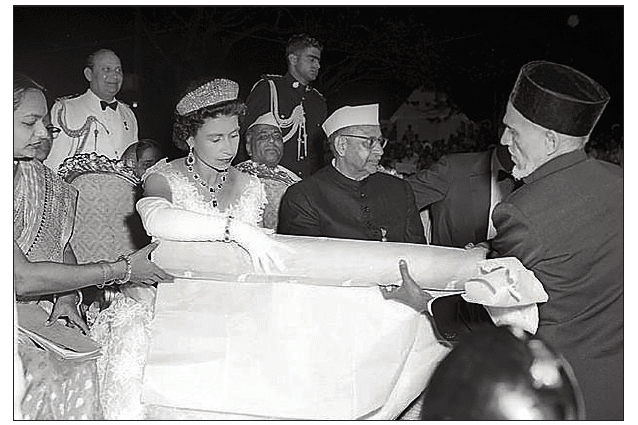Mumbai: Raj Bhawan
This is a collection of articles archived for the excellence of their content. |
History
British governors; VIP British visitors
Umesh Kashikar, Oct 12, 2025: The Times of India

From: Umesh Kashikar, Oct 12, 2025: The Times of India
The visit of UK Prime Minister Keir Starmer to Maharashtra’s iconic Raj Bhavan for a bilateral meeting with Prime Minister Narendra Modi on Oct 9 rekindled memories of past visits by other PMs and members of the British royal family to Raj Bhavan and to its previous avatar as the ‘Government House’ of Bombay.
Perched on the southernmost tip of the city at Malabar Point, Raj Bhavan serves as a symbolic venue — a place steeped in colonial and post-independence history.
During the British era, Raj Bhavan functioned as ‘Government House of the Bombay Presidency’. When it was shifted to Malabar Point from Parel in 1885, the Bombay Presidency encompassed a vast and diverse region, including many parts of present-day Maharashtra, Gujarat, parts of Karnataka, the Sindh province of modern-day Pakistan, and even the Aden Port of Yemen.
Between 1885 and 1947, 13 British Governors of Bombay resided at the Malabar Point estate: Lord Reay (18851890), Lord George Harris (1890-1895), Lord Sandhurst (1895-1900), Lord Northcote (1900-1903), Lord Lamington (1903-1907), George Sydenham Clarke (1907-1913), Lord Willingdon (1913-1918), George Lloyd (1918-1923), Leslie Wilson (1923-1928), Maj. Gen. Frederick Sykes (1828-1833), Lord Brabourne (1933-1936), Lawrence Roger Lumley (1937-1943), and John Colville (1943-1947). It was on Aug 15, 1947, that the Union Jack was lowered for the last time here, under Colville, the final British Governor of Bombay. The two majestic halls that hosted Starmer and Modi also hold significance. The ballroom of the Banquet Hall, now named Jal Vihar, where the two PMs held a press briefing, is celebrating 150 years since its construction ahead of the visit of Prince of Wales Albert Edward (later King Edward VII) to Bombay in 1875.
Modi also hosted Starmer at the Darbar Hall for a cultural performance and luncheon. Built in 1911 to welcome King George V, it holds a special place as it was during this visit that the capital of British India was shifted from Calcutta to Delhi. Interestingly, soon after the reception of Starmer by Modi, the two took a stroll and sat on chairs on the seafacing lawn, located directly above a British-era underground bunker. The bunker was rediscovered in 2016 and converted into a museum.
Over the years, Raj Bhavan has witnessed visits by several British royals and statesmen—among them Prince of Wales Albert Edward (1875–76), Prince Albert Victor (1889), Prince of Wales George (1905), King George V (1911–12), Prince of Wales Edward Albert (later King Edward VIII, 1921), Queen Elizabeth II (1961), Prince Charles (now King Charles III) (1980) and Duke of Edinburgh Prince Edward (2025). Future PM Clement Attlee visited Raj Bhavan in 1928 as a member of the Simon Commission, while PM James Callaghan came in 1978 and Margaret Thatcher in 1981. John Major, ex-PM, visited in 2005.
The seaside lawn where Modi and Starmer shared a few moments thus stands as a reminder of a space where past and present of India–UK ties harmoniously converge.
(The writer is the PRO at the Raj Bhavan)